Hello from the land of jig-saw puzzles, landfills, and wonderings about limits…
and the power of the mundane to transport.
Last week black and white object images invited reflection on the idea of portals - - how a thing can be so much more than the thing itself (check out Boundaries, Housebound).
This week, it’s puzzles…of my photographs from the local landfill…that captivate.
Why was I so distracted by the red trunk (Title: Red Trunk, Discarded)?
How did I not see the colorful fabrics, basket weaving, and textures of wood?
In the land of fine art photography, images on a puzzle might seem blasphemous, and way too ordinary, but I’m starting to wonder if puzzles are the way to go.
When was the last time I really paid attention to the nuances of a soft blue sky with wisps of clouds?
…or to the true power of the blur to add texture and nuance to a scene?
What are the limits of our understanding of a thing?
Like a photograph: When does it shift from a postcard scene or family ‘snapshot’ to a work of art?
Is it the paper it’s printed on, the size of the print, or the way it’s framed?
Or is there an energy embodied in the image itself that communicates something to the viewer that says something different?
When framed on the wall as part of a gallery exhibition, these images from the landfill become art. When on a dining room table, cut into 345 pieces, and all mixed up, what does that image become?
In the flurry of the moment, when I created House Cleaning, Scrapped from the scrap metal pile, it was the texture of the fresh snow, the shapes - - in general - - and the stories embodied by the lone crutch and the yellow mop that caught my attention.
Only when I started to handle the pieces from the initial pile on the table, though, did I see more - - the orange can, the red fire extinguisher, and the wire connecting the pieces.
Details acquire new meaning when disassociated;
Edges are grouped, though incoherent at first;
Colors and shapes long to be joined, but it’s not always obvious.
And what about the layers of metaphor and meaning that emerge, not just from the content of the image, but from the process of doing the puzzle itself?
The reminder that boundaries matter - - Once a problem is bounded, it can be figured out, one piece at a time;
The invitation to be patient - - For me, puzzles are not about how fast I can do it, but how long I sit with the pieces and let myself enjoy the puzzling;
And the sheer joy of sitting for hours with a single image and really getting to know it - - more intimately than I ever did when I first created the image, when I edited the image in Lightroom, when I printed it or even when I stood with it on a gallery wall.
It is this physical intimacy that inspires.
Why would I ever want to have an image on the wall again, when it could be something I can hold, manipulate, and really get to know?
I am grateful for the edges of things - - the boundaries that contain a question or an object.
In the case of my work, and what makes a photograph art or not, and whether or not I even care, needs a boundary, or I will be paralyzed.
Here’s the question, though: What might be the possibilities for puzzles with purpose and meaning to inspire conversation about the meta climate puzzles we face?1
Might interacting with these images be a more effective portal to understanding than seeing them on the wall or in a book?
What do you think?
As always, thank you for sharing this time and your space with me!
With gratitude for you being you,
Lyn
And look who’s back!!
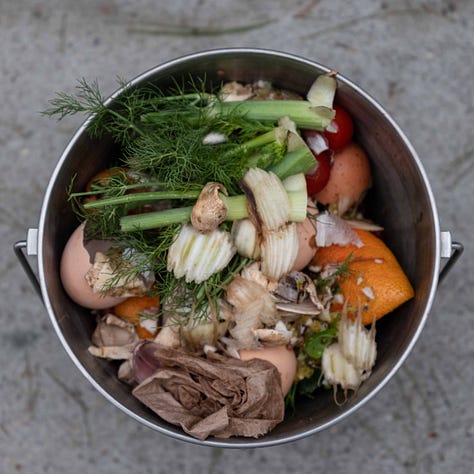

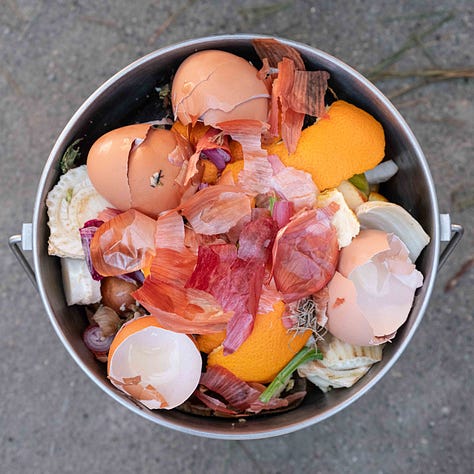
I’m considering using these puzzles as a fundraiser for a local organization that is tackling our region’s waste stream…and I’m excited about the idea of ‘Puzzles with a Purpose,’ but there’s always that artist’s voice wondering if I’m compromising…But when I get out of my head, my heart tells me that I might just be onto something.







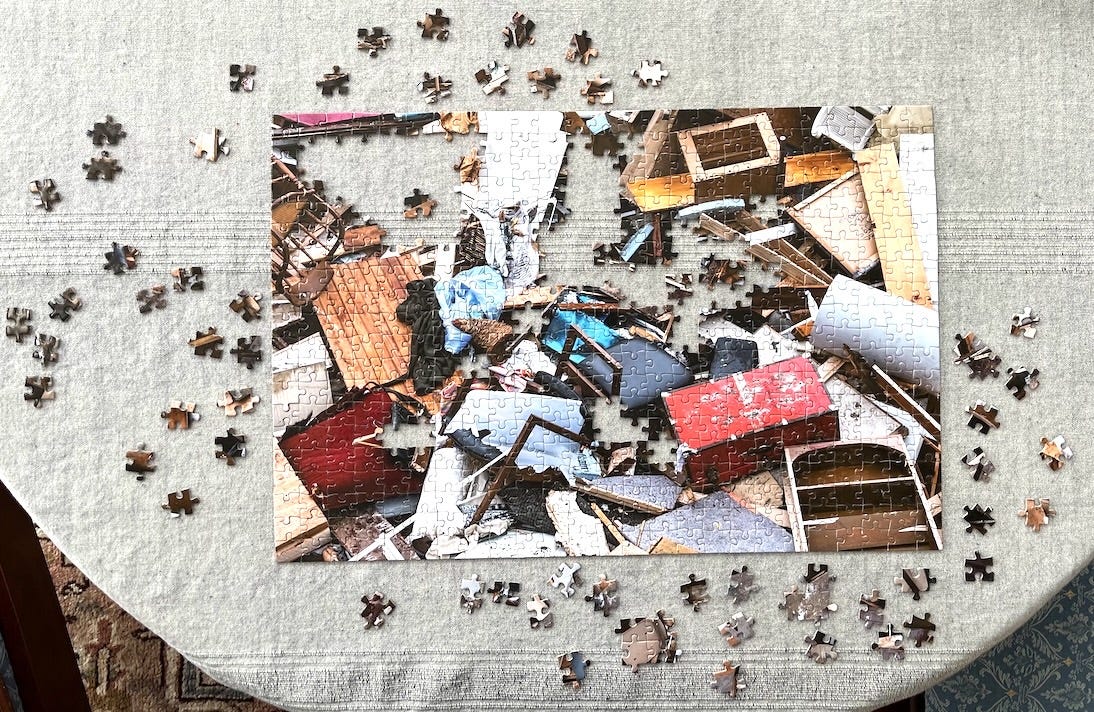

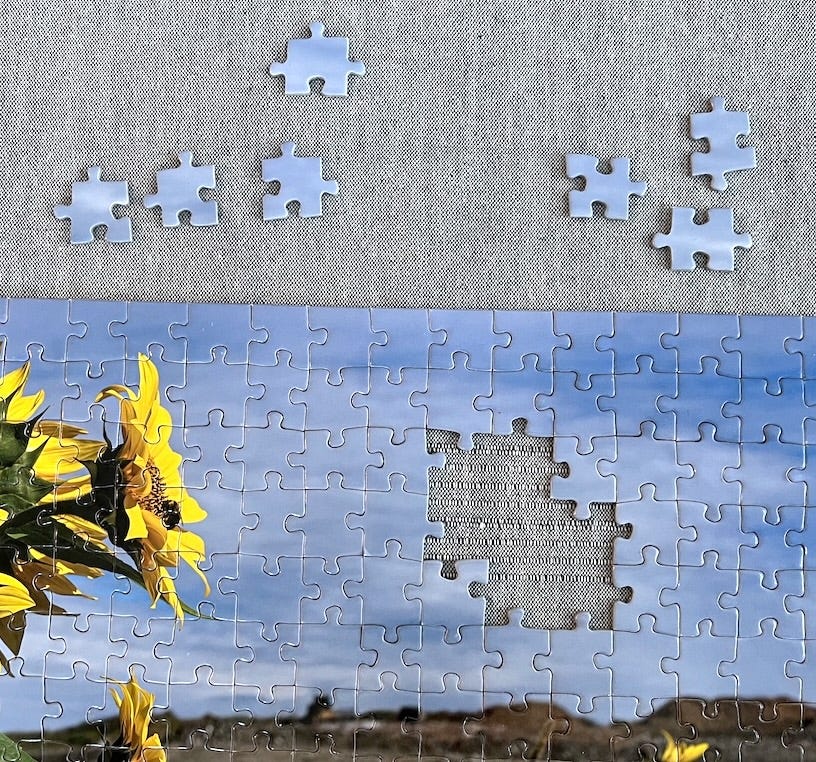

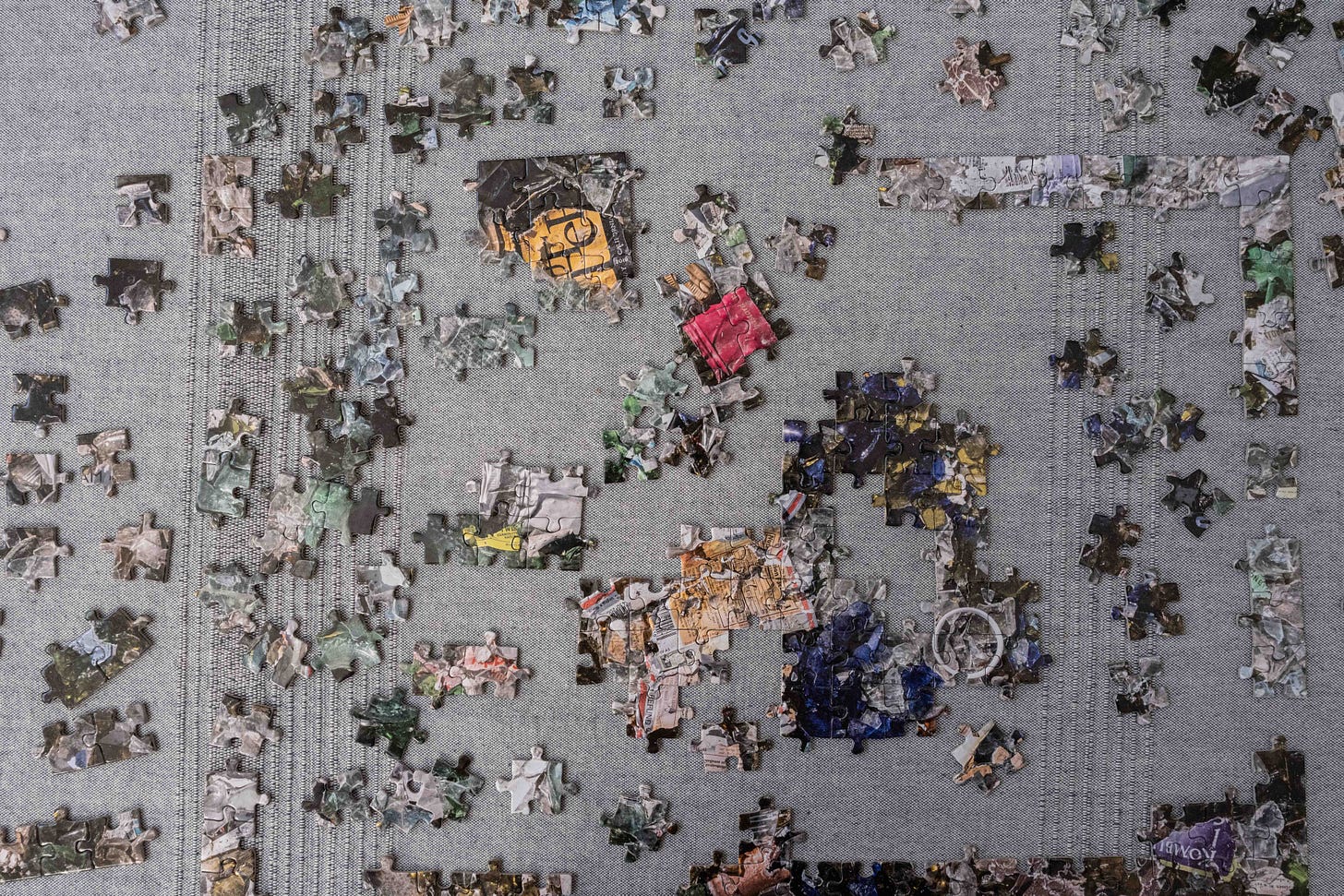
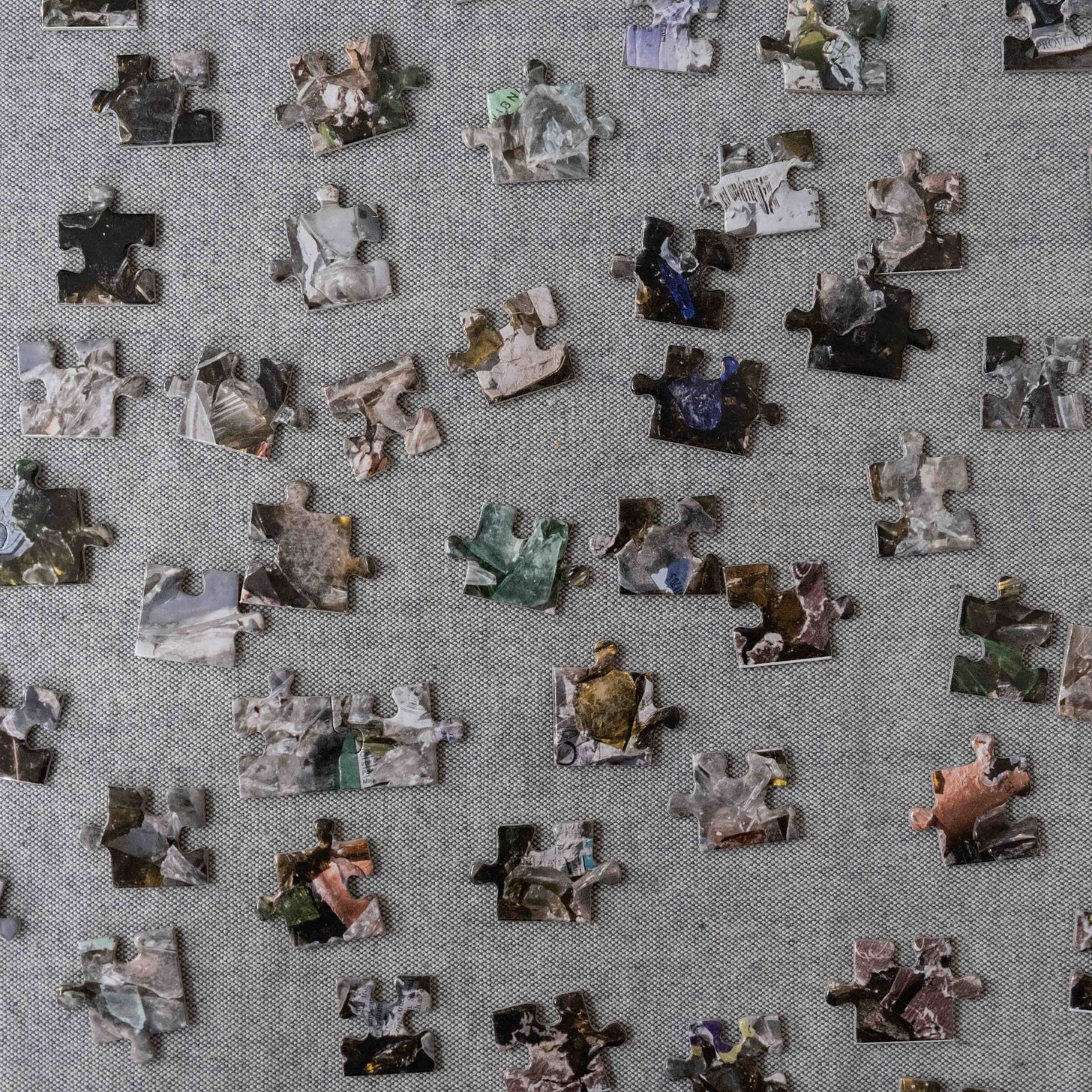



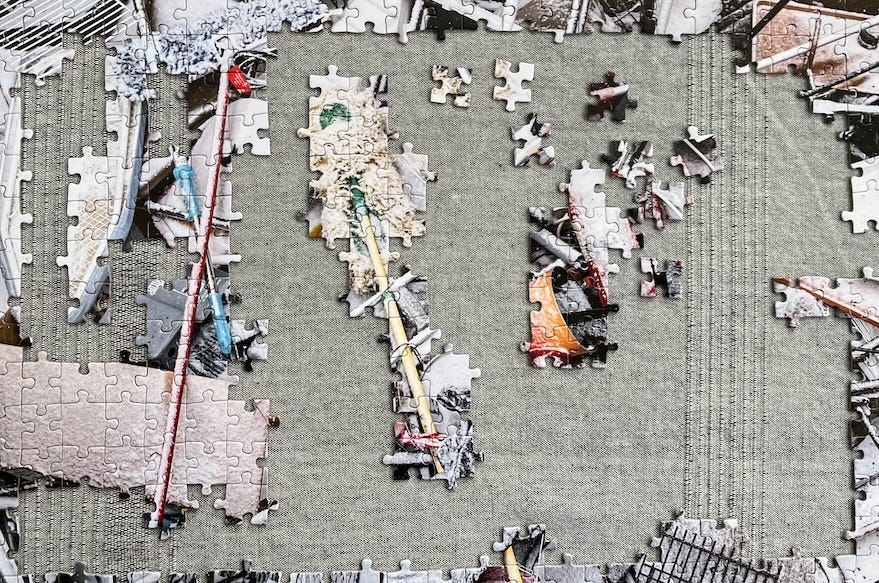
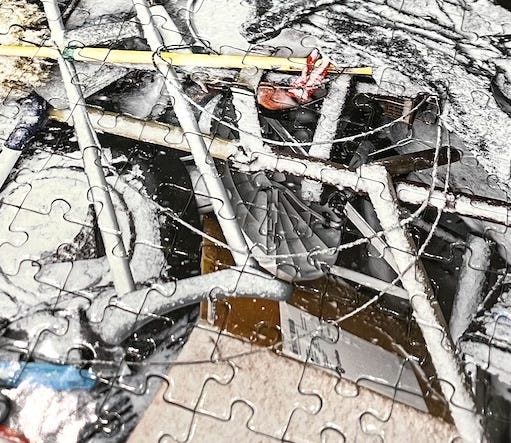
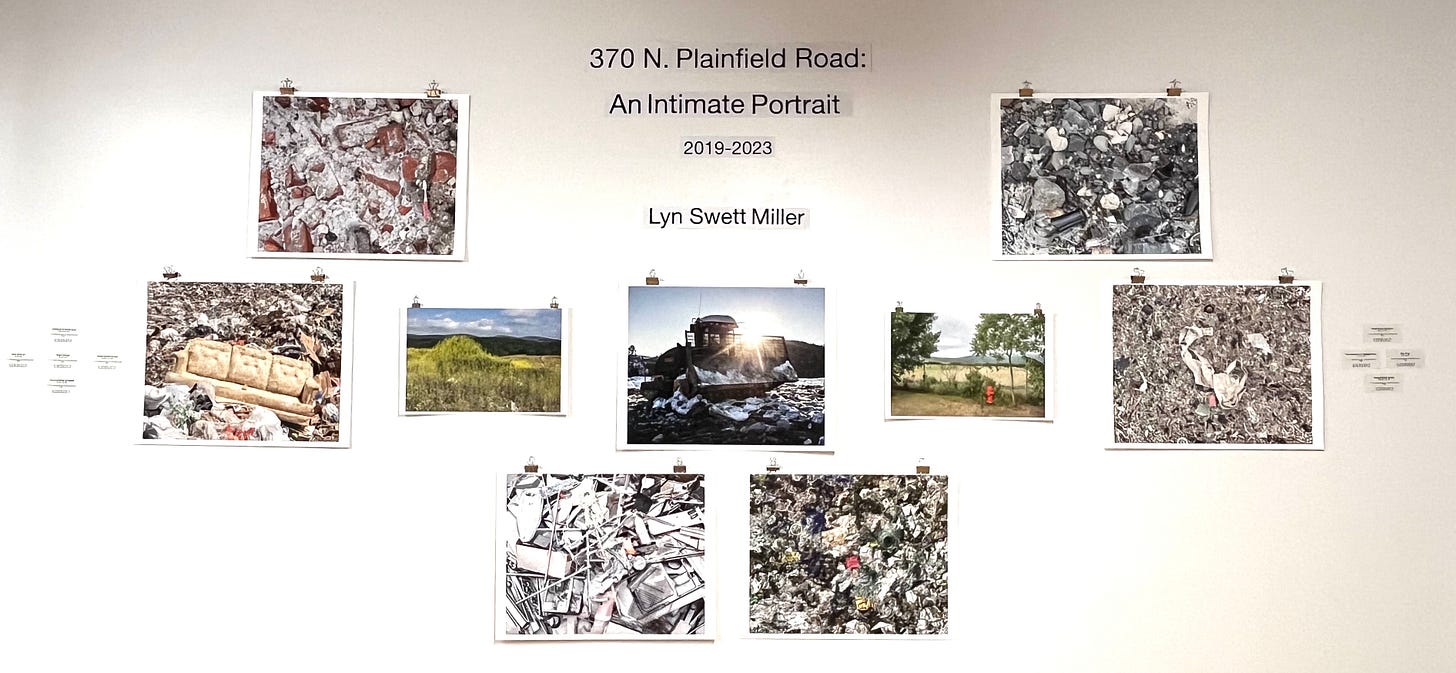


Jigsaws have been easy and enjoyable for me since childhood. It has only been in recent years when doing them online that I have become aware of how much my subconscious is actively involved in directing my conscious mind to put the pieces together. It has gotten to the point that I pretty much work at quieting myself and sit back and watch my subconscious run the show! Quite fun to see me supposedly setting a piece aside and having it lock-up with the piece where I set it outside of the puzzle! This happens quite a bit! I wish I could come-up with a way to resolve the human ignorance about our part in climate change in just the same way!
Absolutely think you’re on to something. How much more intimate can a person get with an image (other than weaving it😂) than to build it piece by piece? I’m entranced